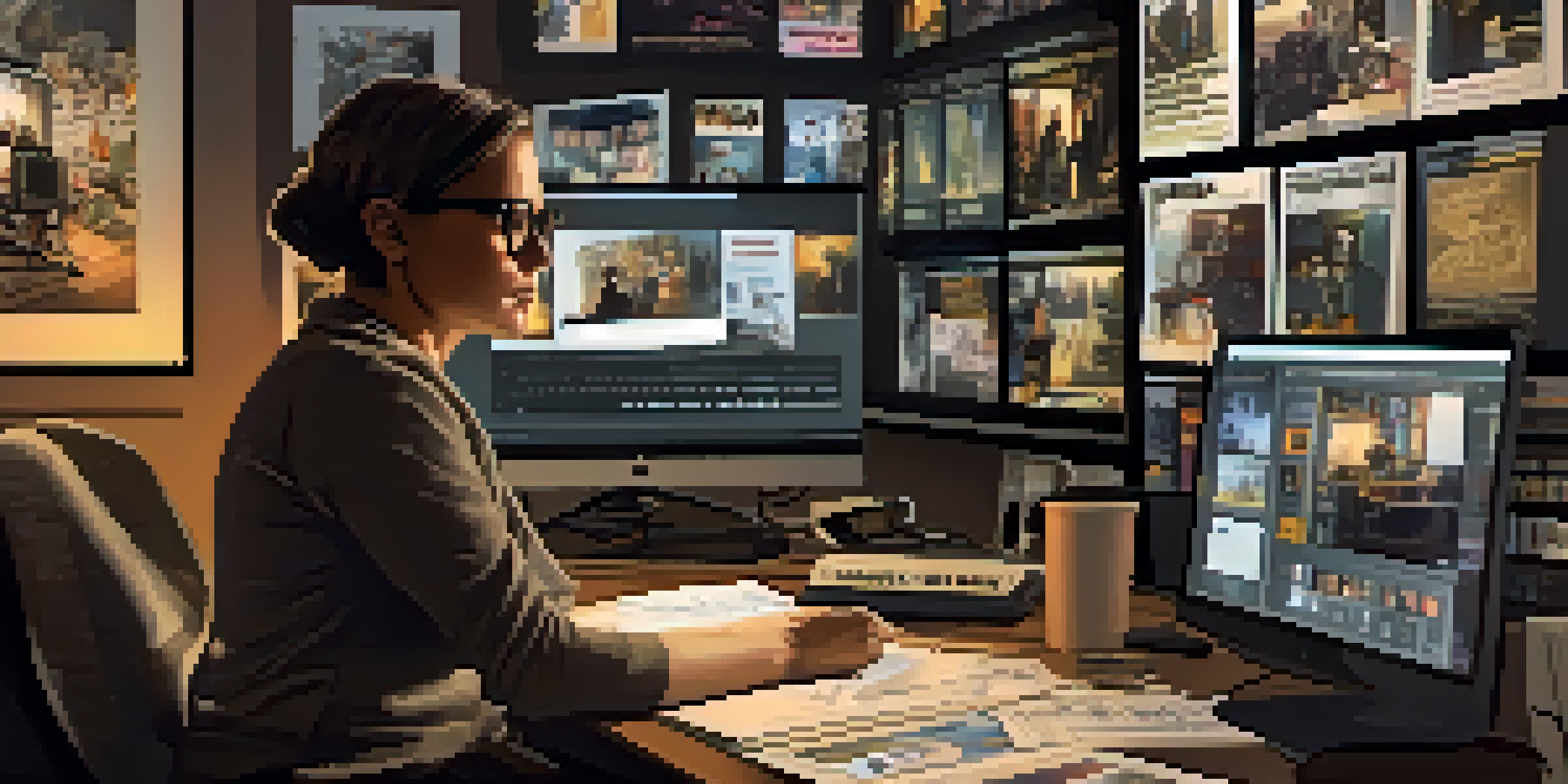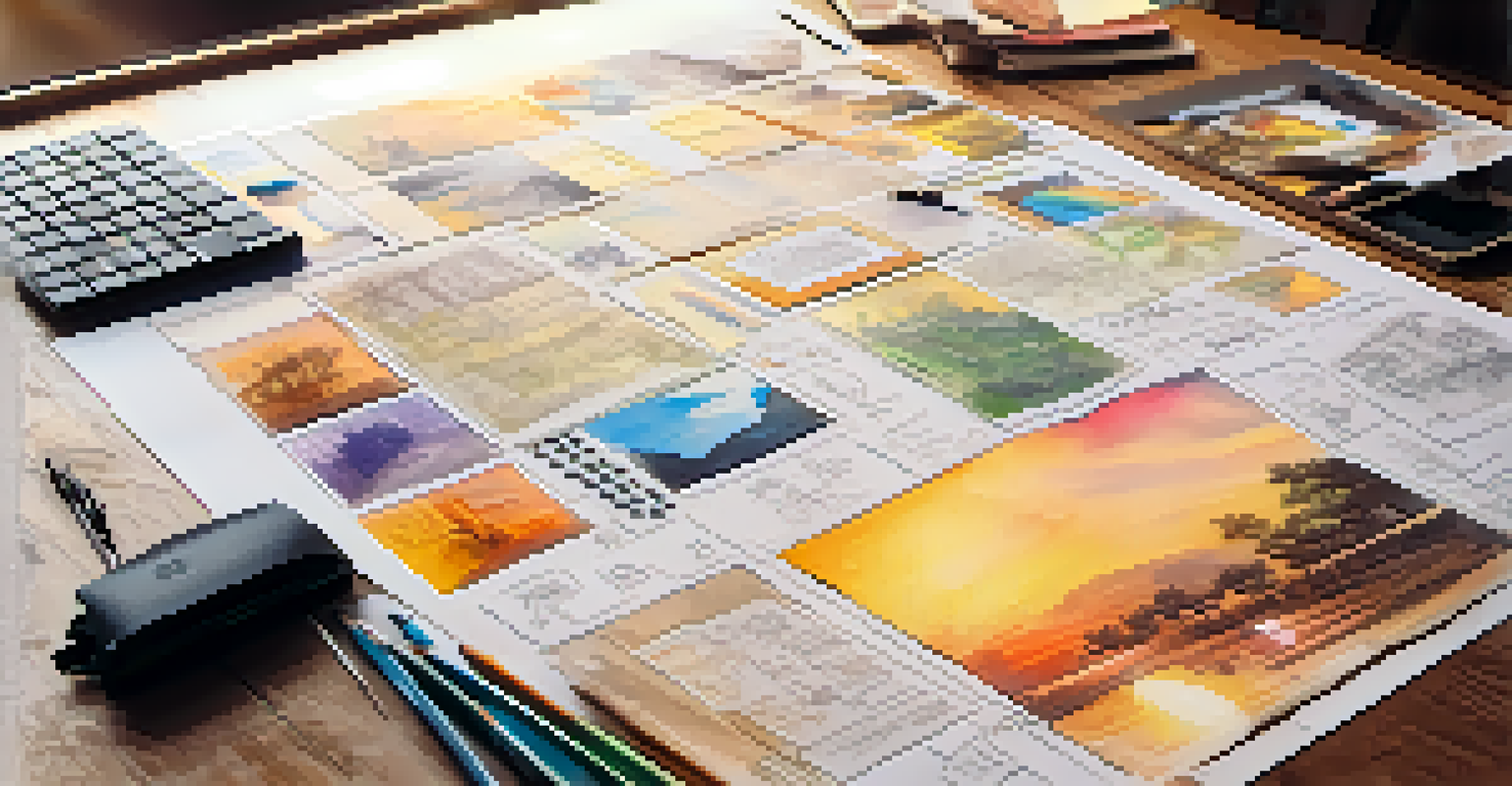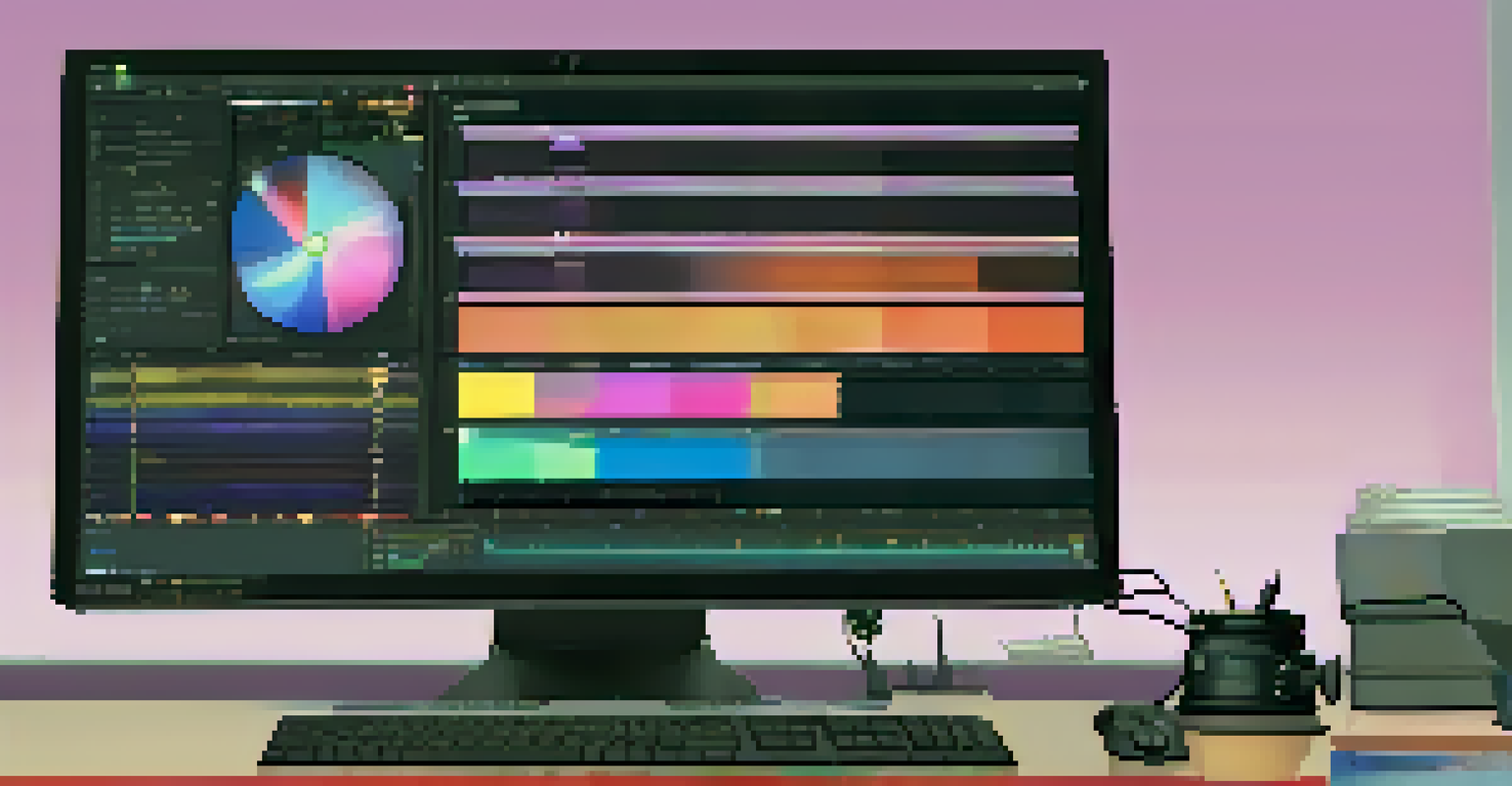The Importance of Continuity in Film Editing Practices

What is Continuity in Film Editing?
Continuity in film editing refers to the seamless flow of visuals and audio that maintains the narrative's coherence. It ensures that the story unfolds logically, making it easy for viewers to follow along. When done well, continuity can create an immersive experience, drawing the audience into the film's world without distraction.
The continuity of the film is essential; it is the glue that holds a film together.
Imagine reading a book where the chapters jump around randomly; it would be confusing and frustrating. Similarly, in film, continuity allows for a smooth transition between scenes, ensuring that elements such as time, location, and character appearance remain consistent. This practice is crucial for maintaining the audience's suspension of disbelief.
In essence, continuity helps to stitch together the various pieces of a film, making it feel like a cohesive whole. Without it, viewers might find themselves jolted out of the narrative, losing interest or becoming bewildered. Thus, understanding continuity is fundamental to appreciating the art of film editing.
Why Continuity Matters in Storytelling
Continuity is essential not just for editing but for effective storytelling. It allows filmmakers to guide the audience's emotional journey, enhancing engagement and empathy for the characters. When viewers can easily follow the story, they become more invested in the outcomes and conflicts presented on screen.

Consider a suspenseful thriller where the tension builds gradually. If the editing disrupts the continuity of time or space, it can diffuse that tension and confuse the audience. In contrast, smooth continuity allows for a natural progression of events, making the emotional highs and lows more impactful.
Continuity Enhances Narrative Flow
Continuity in film editing creates a seamless narrative that keeps viewers engaged and immersed in the story.
Ultimately, continuity creates a rhythm that reflects the story's pacing and tone. It helps to establish connections between scenes, creating a narrative thread that keeps viewers engaged. This is why continuity is often regarded as a backbone of effective storytelling in film.
Types of Continuity: Visual and Narrative
There are two primary types of continuity in film editing: visual and narrative. Visual continuity ensures that all visual elements align perfectly, such as lighting, angles, and props, to maintain a consistent look throughout the film. This precision helps keep the audience focused on the story rather than noticing discrepancies.
Editing is not just about cutting footage; it’s about creating a seamless experience for the audience.
On the other hand, narrative continuity focuses on the story's timeline and character development. It ensures that events unfold logically and that character arcs progress in a believable manner. Both types of continuity are essential for creating a polished and professional film.
In practice, editors often use various techniques to achieve these types of continuity. For instance, they might employ match cuts, which connect two visually similar scenes to maintain visual coherence, or they might carefully track a character’s emotional journey to ensure that their growth feels organic. This meticulous attention to detail makes all the difference.
Common Challenges in Maintaining Continuity
Despite its importance, maintaining continuity can pose several challenges during the editing process. Filmmakers often shoot scenes out of order due to scheduling conflicts or location issues, which can lead to inconsistencies in character appearance or setting details. This is where the editor's keen eye comes into play.
For example, if a character's hairstyle changes between scenes, it could distract viewers and break the immersion. Editors must meticulously track every detail, ensuring that each shot aligns with the overall narrative and visual style. This requires both creativity and a strong understanding of the story being told.
Types of Continuity Explained
Visual and narrative continuity are essential for maintaining consistency in both the film's appearance and its storyline.
Moreover, external factors like lighting variations or changes in weather can complicate continuity. Editors often face the task of fixing these discrepancies in post-production, making their role critical in delivering a polished final product. It's a delicate balance of artistry and technical skill.
Techniques for Achieving Continuity
Filmmakers use a variety of techniques to achieve continuity in their films. One common method is the use of storyboards, which outline each scene visually before filming begins. This helps ensure that all elements are considered, from camera angles to character movements, promoting a cohesive visual narrative.
Another technique is the use of shot lists, which detail every shot needed for a scene. This allows editors to reference specific moments during the editing process, making it easier to maintain consistency. Additionally, editors often rely on software tools that allow them to track visual elements and notes throughout the project.
Finally, communication among the cast and crew is vital for maintaining continuity. Regular discussions about character details, plot points, and visual style can prevent missteps that disrupt the flow of the story. This collaborative effort ensures that continuity is prioritized from the outset.
The Role of the Editor in Maintaining Continuity
The editor plays a pivotal role in maintaining continuity within a film. They sift through countless hours of footage, piecing together the story while ensuring that every transition feels natural. This requires not just technical skill, but also a deep understanding of the narrative and its emotional beats.
Editors must constantly evaluate the footage against the script, looking for any inconsistencies or gaps in the story. Their decisions can significantly impact the film's pacing and overall effectiveness. For instance, they might choose to cut a scene that disrupts the flow, even if it contains captivating footage.
Editors Ensure Consistency
The role of the editor is crucial in maintaining continuity, as they piece together footage while ensuring natural transitions and coherence.
Moreover, editors often collaborate closely with directors to ensure that the film's vision is realized. This partnership is crucial, as both must agree on the importance of continuity in achieving the desired emotional impact. Ultimately, the editor's expertise can elevate a film from good to great.
Conclusion: The Lasting Impact of Continuity in Film
In conclusion, continuity is a fundamental aspect of film editing that significantly affects the viewer's experience. It enhances storytelling by creating a seamless narrative flow, allowing audiences to become fully immersed in the film's world. When continuity is prioritized, the film resonates more deeply with its audience.
As we've seen, the challenges of maintaining continuity are numerous, but with the right techniques and a skilled editor, these hurdles can be overcome. The result is a polished film that feels cohesive and engaging, drawing viewers into its emotional landscape.

Ultimately, the importance of continuity in film editing cannot be overstated. It is a vital ingredient in the recipe for successful storytelling, ensuring that films captivate audiences and leave a lasting impression.